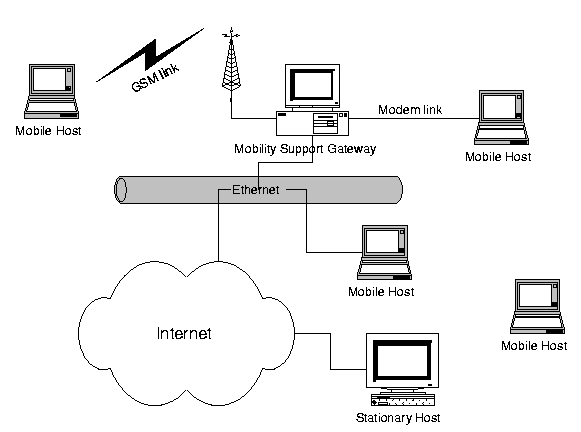
Figure 1: System overview



The work described in this position paper is part of the AMIGOS project, which aims at providing transparent support for semi-connected operations on mobile computers running a standard operating system.
In recent years, the size and cost of computers have decreased, allowing mobile use. The advance of wireless communications, both in wireless LAN and cellular phone systems, makes it possible to gain access to networks when needed. These two technologies make mobile computing possible. This trend has only been followed sluggishly by software designers, and currently support for mobile computing is poorly integrated in general operating systems and network software.
The type of system we are considering consists of a number of mobile hosts (notebooks) and a stationary gateway (see Figure 1). The mobile hosts may either be connected by dial-up serial links (GSM or ordinary telephone links) or be directly connected to a LAN. We assume the mobile host is mostly used as a normal workstation, but that the ability to move about for periods of varying length (from hours to days) is attractive to the user.
To allow the mobile host to move freely, we have designed a communication layer, which hides the complexity of using and switching between different means of communication, supports disconnected operation, and makes scheduling of data possible on low bandwidth communication channels.
In the following sections, we describe the communication model used and the data scheduling approach adopted.